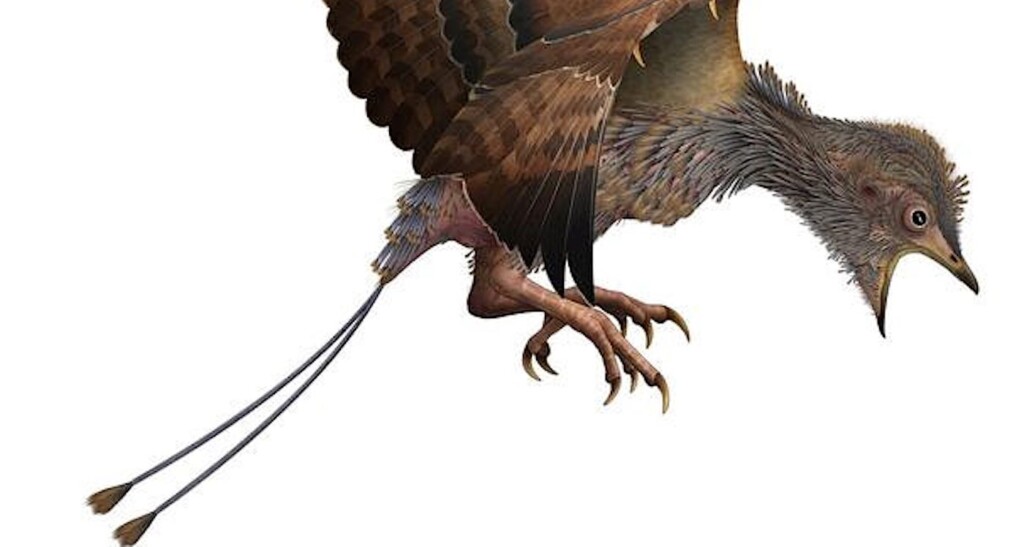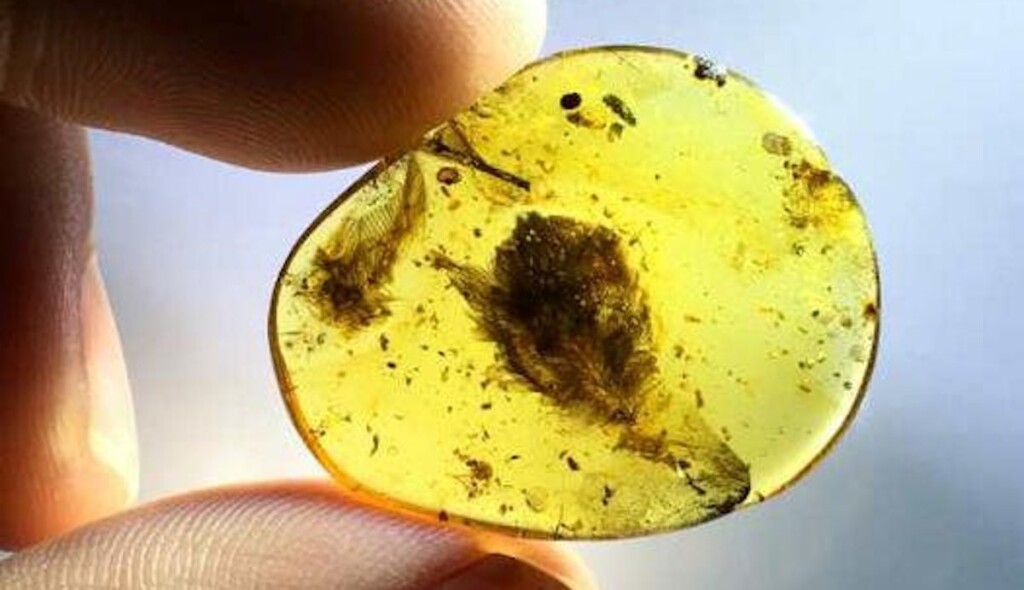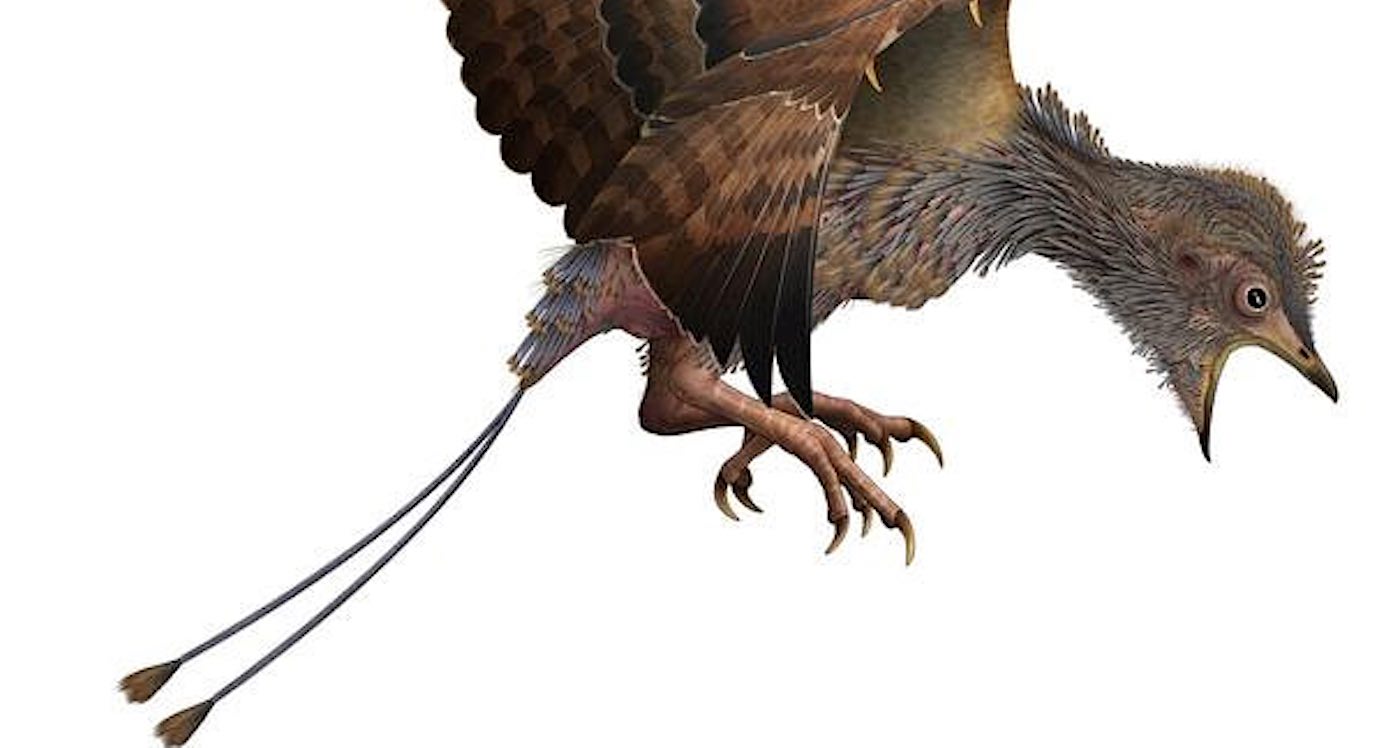
(By Mark Waghorn, SWNS)
Bird feathers from 99 million years ago not only shows that modern birds are descended from dinosaurs but might also point to why some of their ancestors died out.
The feathers, found preserved in amber in Myanmar, show how molting was the key to some early extinctions.
It represents the first definitive fossil example of juvenile molting in birds, the only type of dinosaurs to survive the asteroid strike.
The bird, named Enantiornithine, had to keep itself warm while undergoing rapid shedding, a factor in the species’ ultimate doom, say scientists.
All non-avian dinosaurs were wiped out in the asteroid strike that hit the Gulf of Mexico 66 million years ago.
“Enantiornithines were the most diverse group of birds in the Cretaceous, but they went extinct along with all the other non-avian dinosaurs,” explained Professor Jingmai O’Connor of The Field Museum Chicago, who published the research in the journals Cretaceous Research and Communications Biology.
“When the asteroid hit, global temperatures would have plummeted and resources would have become scarce, so not only would these birds have even higher energy demands to stay warm, but they didn’t have the resources to meet them.”
The present consensus is that birds are a group of theropod dinosaurs that originated during the Mesozoic Era from 252 to 66 million years ago.
Feathers are made of a protein called keratin, the same material as our fingernails and hair and molting happens as they can’t be repaired.

“Molting is fundamentally such an important process to birds, because feathers are involved in so many different functions,” said Prof. O’Connor.
“We want to know, how did this process evolve? How did it differ across groups of birds? And how has that shaped bird evolution, shaped the survivability of all these different clades?”
CHECK OUT: Paleontologists Discover Fossil Shows That Dinosaurs Had ‘Belly Buttons’
Today there are two types, known as altricial or precocial birds. The former hatch naked so parents can transmit body heat directly to their skin. The latter are born with feathers and are fairly self-sufficient.
Molting takes a lot of energy, and losing a lot of feathers at once can make it hard for a bird to keep itself warm. As a result, precocial chicks tend to molt slowly. They keep a steady supply of feathers, while altricial chicks that can rely on their parents for food and warmth undergo a ‘simultaneous molt’ at roughly the same time.
Prof O’Connor explained, “This specimen shows a totally bizarre combination of precocial and altricial characteristics.
“All the body feathers are basically at the exact same stage in development, so this means that all the feathers started growing simultaneously, or near simultaneously.”
In modern adult birds, molting usually happens once a year in a sequential process, in which they replace just a few of their feathers at a time over the course of a few weeks. That way, they are still able to fly throughout the molting process. Simultaneous molts in adult birds are more common in aquatic birds like ducks.
They tested more than 600 skins of modern birds stored in the ornithology collection of the Field Museum to look for evidence of active molting.
LOOK: Dinosaur With Biggest Claws Ever Discovered Was ‘Edward Scissorhands on Speed’ Scientists Say
“Among the sequentially molting birds, we found dozens of specimens in an active molt, but among the simultaneous molters, we found hardly any,” said first author Dr Yosef Kiat.
While these are modern birds, not fossils, they provide a useful proxy.
“In paleontology, we have to get creative, since we don’t have complete data sets,” said O’Connor.
“Here, we used statistical analysis of a random sample to infer what the absence of something is actually telling us.”
It is believed ancient birds simply weren’t molting as often as most modern birds—either doing it simultaneously or not on a yearly basis like today. Prehistoric birds and feathered dinosaurs, especially ones from groups that didn’t survive the mass extinction, molted differently, state the US team.
LOOK: Largest Dinosaur Skull Ever Discovered Going on Display–A Torosaur Named Adam
“All the differences that you can find between crown birds and stem birds, essentially, become hypotheses about why one group survived and the rest didn’t. I don’t think there is any one particular reason why the crown birds, the group that includes modern birds, survived. I think it is a combination of characteristics.
“But I think it is becoming clear that molt may have been a significant factor in which dinosaurs were able to survive.”
SHARE With the Dinosaur Lovers on Social Media…




















